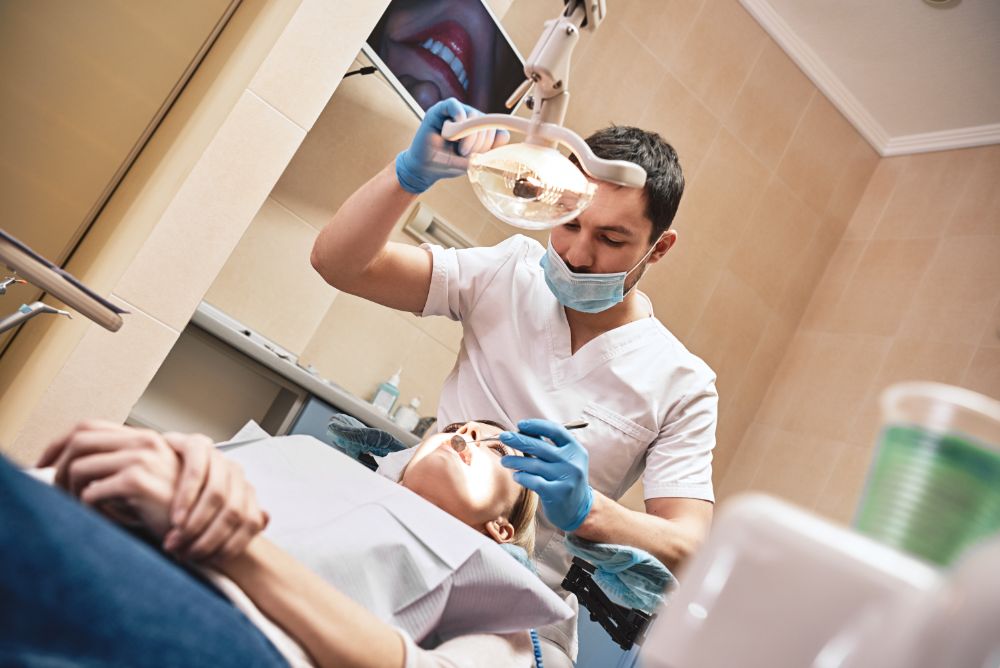Professional whitening is done inside a dental office. In-office whiteners are more effective than the other alternatives because they contain more peroxide. Here is how you can have single tooth whitening.
Whitening Using Custom Trays
Your dentist can fabricate a single-tooth whitening tray for you to whiten your yellow tooth. This may enable you to whiten the yellow tooth without altering the color of your remaining teeth. Dr. Alex Rubinov recommends a whitening solution with 10% carbamide peroxide gel to achieve the ideal results.
In The Dental Office
An in-office whitening treatment delivers potent results that may whiten a single stained tooth in one hour or less. Your dentist may apply the powerful bleach on the tooth’s surface and whiten it until it blends in with other teeth.
Walking Bleach
The “walking bleach” technique came from the old in-office technique, enabling a shorter in-office whitening treatment. In this two-appointment procedure, the whitening gel is put into your tooth. Your dentist will create a cave in the tooth, insert the bleach, then cover it up. After 3–5 days, you’ll return to your dentist’s office to get the material withdrawn and applied if your tooth hasn’t become entirely as white as you seek.
Inside-outside Bleaching
Inside-outside bleaching is one of the top choices for whitening a single stained tooth. It utilizes a mix of custom tray bleaching or the walking bleach treatment described above. With bleach put into the tooth and on the external tooth surface with the single-tooth tray, your stained tooth gets a doubled dose of whitening to let the tooth attain its maximum whiteness.
Dental Professionals Remove Plaque More Effectively
It takes more training and medical specialization to remove plaque than one thinks. As reported by the American Dental Association, dentists usually train for a minimum of two years to learn to clean teeth properly. Further considered, one may pursue dental hygiene bachelor’s and master’s degrees too.
Someone pushing metal or scraping tools into their mouth might accidentally damage their teeth or gums. Trained dentists are qualified to remove plaque growth. Professional dentists perform plaque removal by employing metal scaling tools for scaling or using ultrasonic machines.
Plaque Treatment at Home Risks Infection
It would help if you refrained from removing tartar personally, as you might risk contracting a bacterial infection. This owes principally to you not being professionally trained to remove tartar. Within the dentist’s clinic, the dentist removes all tartar at hand. However, if you remove tartar from home, you might skip removing portions. You might even push tartar beneath the gum line, aggravating the situation.
In certain situations, this may result in tooth infection. Tartar or bacteria may rapidly travel to the tooth’s pulp via the root canal without enamel. Beyond just risking teeth infection, you may even heighten your exposure to gum diseases because tartar or bacteria irritate the gums.
Gum disease afflictions may range from minor to severe. Several patients might develop low bleeding or soft gums sensed by over-brushing or flossing. In more severe cases, large-scale tooth and bone loss may develop.
Enamel Might Be Damaged with Home Treatment
For tartar removal from home, you must purchase a kit that contains similar tools to those that dentists use to clean up your teeth, like metal scrapers. Usually, if you have the proper tools, you might be able to remove tartar. Still, the tartar is not all that you may withdraw.
Your tooth’s enamel comes beneath this tartar. This may get effortlessly removed using metal tartar removal scrapers.


